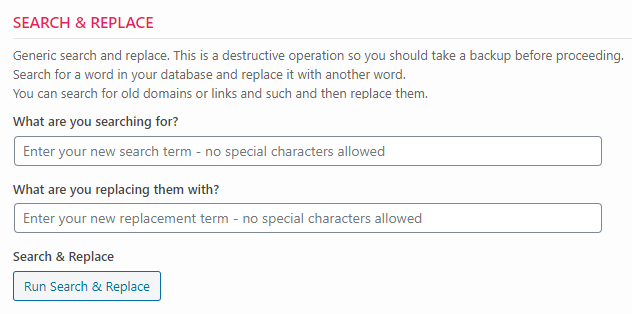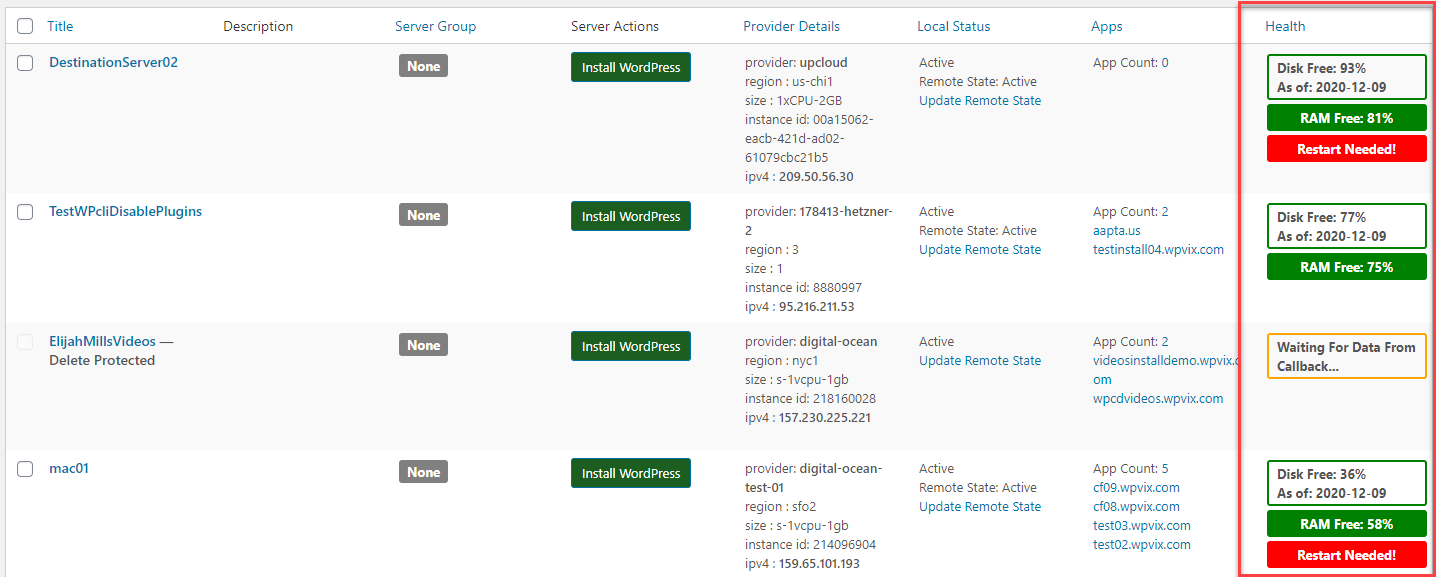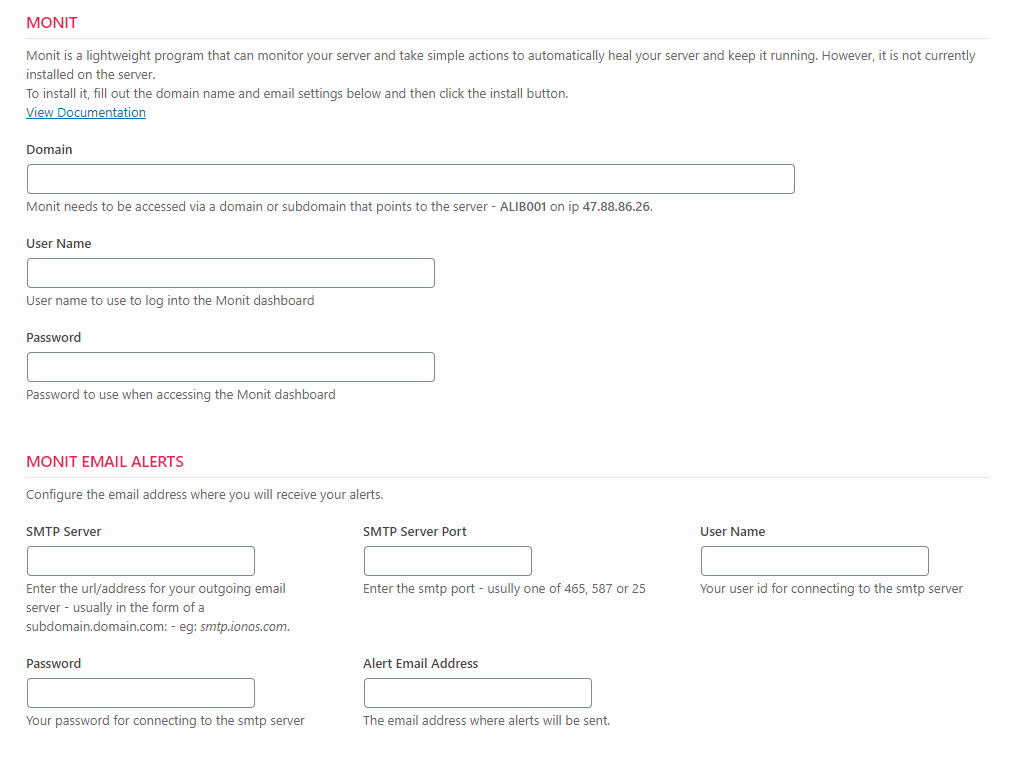Version 4.3.0 will be the second release since the end of our Black Friday Cyber Monday 2020 Lifetime Sale and its features are a direct result of that sale.
BFCM2020 is the first time (and probably will be the only time) we discounted our lifetime options. And, as you might expect, the new customers who purchased are some of the most committed to WPCD. They had some very good input into where we could quickly improve some things.
This release a number of those suggested improvements. Many of them were suggestions that make things easier for the admin.
So, we’d like to say a big “Thank You” to those customers for their show of support!
And, of course, we are including some larger improvements as well. In fact we’re including so many that this release probably should have a full version number increase!
Simple Database Search and Replace
We’ve always had the ability to do a full search and replace when changing domains. But sometimes you need a little flexibility in what you’re searching and replacing after a site move or transfer is complete.
For example, you might want to search for “http://mydomain.com/” and replace it with “https://mydomain.com” because over time links got mixed up. Or you might want to search for “https://www.mydomain.com” and replace it with “https://mydomain.com”. There are a few more relatively common scenarios where search-and-replace makes sense.
So, we’ve provided it. Because it’s closely related to the CHANGE DOMAIN function, we just added this new option to that [CHANGE DOMAIN] screen:
Tracking Server Health
When you have a lot of servers, it’s a PAIN to open up every screen just to see key health measures related to your servers. So, we’ve placed a few of them right in the server list – just scroll through the list and handle the things in red. We now display:
- Free disk space
- Ram Usage
- Whether security updates need to be done (which is usually done automatically)
- Whether the server needs to be restarted
- Any malware found
Speaking of server health…
Healing via Monit
We’ve added MONIT as an option for your servers. So, what is Monit? Here is a description, directly from their site:
Monit is a small Open Source utility for managing and monitoring Unix systems. Monit conducts automatic maintenance and repair and can execute meaningful causal actions in error situations.
Practically speaking, this means that it will send you email alerts when it thinks bad things are happening on your servers.
We install a basic configuration but chances are that, for your really important servers, you’ll want to tweak the settings a bit.
Metadata Syncing
This feature allows an admin to set up a one-way, semi-real-time backup sync of server and site metadata from the WPCD plugin to another site running the WPCD plugin.
Normally, in the event of data loss, you would restore from a backup of your WPCD site. But, sometimes that takes too long.
Instead, with the Metadata Syncing feature you can push all your WPCD server and site metadata along with your WPCD settings to another instance of WPCD running on a different WordPress site. And you can do this as often as once per hour or as little as once per day.
With this feature you can be up and running and connected to your servers within minutes in the event of a failure of your WPCD primary site.
Managing Backups
Sometimes you just want to reset your local backups or prune them on-demand. We now offer options to allow you do just that. You get them on both the server and site screens:
New Restore Options
We added two new restore options. You can now restore just the wp-config.php or just the primary NGINX configuration file for a site.
Why?
Because if a user/admin edits these files and makes a mistake then it’s better and easier to just restore them rather than force a full restore of the entire site.
The alternative is to manually extract and restore them from the backup files. Which just leaves room for more mistakes.
We know that it’s just a tiny thing but it might mean spending a couple of minutes vs 30+ minutes wrestling with a restore process.
Per-Server SSH Keys
One of the limitations of prior versions of WPCD was that all servers used the same key-pair for a particular provider. This is convenient but also limiting for users who have servers that need a little extra security.
So, we’ve kept the same model in place – all servers for the same provider will use the same ssh key-pair by default. BUT, after the server is provisioned, an admin can update the root user with a different public key and then update the WPCD server record with the corresponding private key.
Any server with its own designated ssh key-pair data will use that data for all future operations instead of the data set for its provider.
Frankly, this is one of those feature holes we’ve been wanting to fix for a while and we’re really happy we were finally able to get around to it.
Easier Access To Log Files
There is a new TAB on the server screen that offers direct access to server-level log files. These include:
- NGINX
- MYSQL
- SYSLOG
- PHP
And more.
PHP 8.0
You can now install PHP 8.0 on your servers and sites. Most plugins and themes are not yet certified for use with PHP 8.0 so definitely do not use this in production.
We suspect it’ll be another year or more before you can safely use PHP 8.0 on most sites. There are just too many breaking changes that plugin and theme authors have to deal with before you can run PHP 8.0 on most sites without issues. Some plugins and themes will likely never be updated to run on PHP 8.0.
Ubuntu 20.04 LTS
When installing a server, you can now choose between Ubuntu 18.04 and 20.04. 20.04 support is only preliminary so we recommend 18.04 for production servers and 20.04 for your test servers.
Developer Hooks
Some of our BFCM customers asked for new developer hooks to support new deployment scenarios. Some of these hooks were quite tricky to implement but now developers will have an easier time supporting deployment scenarios.
One example scenario that is a lot easier to deal with now is described in part 4 of our developer tutorial series.
Additionally, you now have dedicated hooks to notify you when a server has been deployed.
Here is the full set of hooks that have been added:
Action Hooks To Customize Servers and Sites
- wpcd_server_wordpress-app_server_created
- wpcd_server_wordpress-app_prepare_server_command_done
- wpcd_command_wordpress-app_completed
- wpcd_command_wordpress-app_prepare_server_completed
Filter Hooks To Customize Servers and Sites
- wpcd_wordpress-app_initial_server_attributes
- wpcd_wordpress-app_create_popup
- wpcd_wordpress-app_install_app_popup
“Custom Fields”
We are introducing the concept of “custom fields” for developers to make it easier to link new fields added to the NEW SERVER and NEW SITE pop-ups to the custom BASH server scripts.
Before this new concept, adding a new field to those popups and linking it to the BASH scripts required more than a half dozen filter and action hooks. Now it just requires three. See this tutorial for more information.
We expect to greatly expand on this concept in future versions.
Tweaks
- We moved the HELP options from under the SETTINGS screen to its own dedicated menu item.
- We now warn when using problematic characters in passwords and other fields while deploying new servers and sites.
- We added a notice to the LOGGING AND TRACING settings screen to warn users not to turn it on. We were starting to get a ton of inquiries about things that get written to our debug logs when those flags were turned on. They should only be turned on with supervision from our tech support team.
- Made sure that server status callbacks do not run at the same time as backups. Before, we had them running at the same time which was just a little dumb thing on our part.
Fixes
- Malware scanning sometimes threw false positives on three files so we cleaned that up.
- Some base servers at certain cloud providers such as UPCLOUD did not have the UFW firewall utility pre-installed. So we now actively attempt to install it when deploying new servers.
- Fixed an issue where we weren’t detecting when a particular cron was inactive and failed to warn the user about the potential issue.
Wrap-up
The latest beta of this release is now available in each customers’ account. We encourage you to download it try it out – we’re open to feedback!
Was This Article Useful? Or do you have questions or comments about it (or our products & services)? We'd love to hear from you!
Automatic Notification Of New Articles
Sign up to get automatic notifications of new articles. This is a different list than our standard list - you only get new articles once a week (usually on Mondays). No other emails will be sent unless you sign up for our general list as well.
Follow us on Twitter! We post a lot of cool things there first. To keep up, click the "X" below!







